Behaviour and Culture
At Marner, our whole school community commits to being Ready, Respectful and Safe.
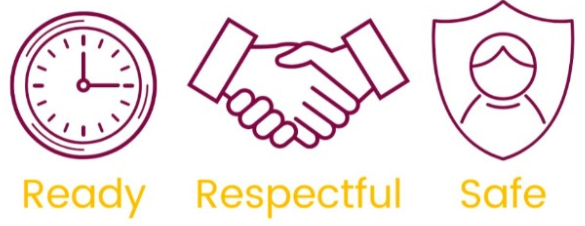
We are a rights respecting school where children learn about their rights across the curriculum and learn to respect each other’s rights. Article 28 states that children and young people have the right to education no matter who they are, regardless of race, gender, disability, special educational needs or social and economic background. At Marner we believe in equity and equality. All children deserve the best.

We work hard to know our pupils well. Only then can we know which factors might affect pupil behaviour and what the school can do to address these. We focus on developing positive relationships to ensure that pupils feel valued, supported and an important part of the school community. We build and maintain relationships through trauma informed, rights respecting and restorative practices.
Children are taught what it means to be Ready, Respectful and Safe and what behaviours might look like both inside and outside the classroom. This deeper understanding helps children to identify what the right choices are and recognise when they or others may need support to be able to make the right choices. These rules echo our core values of respect, happiness, growth, hope, motivation and community.
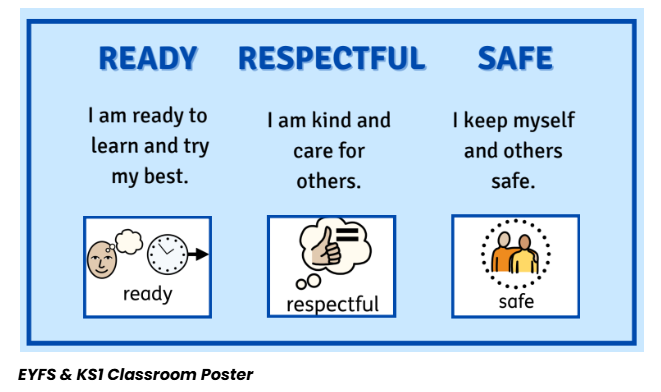
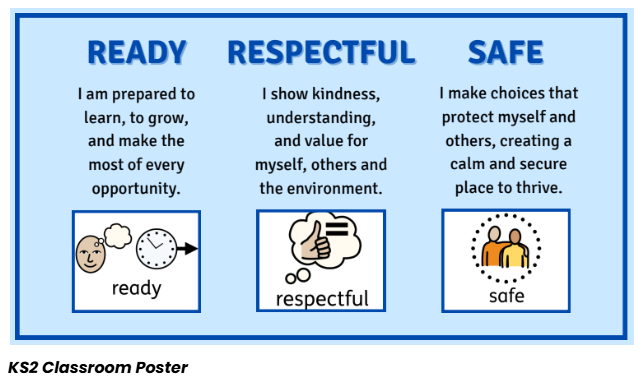
Rewarding Positive Behaviour
We promote and celebrate positive behaviour in a number of ways:
-
Encouraging positive behaviour through frequent and specific praise, both in class and around the school
-
Clear, simple and consistent rules, sanctions and rewards
-
Sharing successes with parents both in person, on a personal level and on a whole school level through our school newsletter and Class Dojo page
-
Celebration assemblies every Friday with our praise cards, TTRS & Reading Eggs certificates and 100% attendance winners
-
Explicit teaching and learning through our Establishing Weeks, Jigsaw Curriculum and whole school assembly themes
-
Use of Dojo points and Dojo tokens linked to school rules and values
-
SLT certificate/sticker for individuals going over and above with their behaviour or learning (sent from the class teachers)
-
Golden Time at the end of the day on Friday afternoons
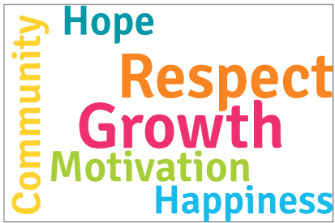
Praise Cards
Each week, teachers select two children who have demonstrated above and beyond one of our school values, to be rewarded with a praise card in our Friday celebration assembly. Teachers read out their praise cards to be celebrated by the assembly and children's names are shared in the school Newsletter as well as photos of recipients posted on our school Class Dojo page.
Class Dojos
Children are rewarded Dojo points for excellent learning behaviours in class that align with our school values of Ready, Respectful and Safe as well as our
six school values and school priorities such as oracy and presentation. Staff at lunchtime also reward Dojo tokens to children during lunchtime for showing
behaviours which demonstrate that they are Ready, Respectful and Safe.

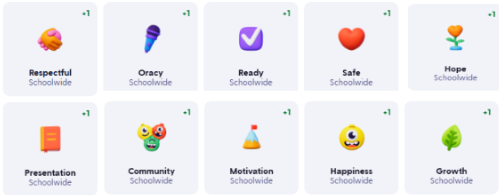
Zones of Regulation
All children are taught how to identify and manage a range of emotions through the four Zones of Regulation. The Zones of Regulation catergorise all the different ways we feel and states of alertness into four concrete coloured zones. They provide a system of self-regulation to help pupils self-regulate in both the classroom and playground, so they feel in the best frame of mind both in body and emotionally for learning and in specific situations. Children are taught that throughout the day they may feel different emotions and be in different zones and that’s OK. They are taught how to manage their emotions through a range of strategies, moving between different zones successfully through self-regulation of their emotions to continue their day and learning.
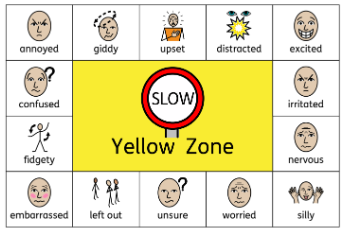
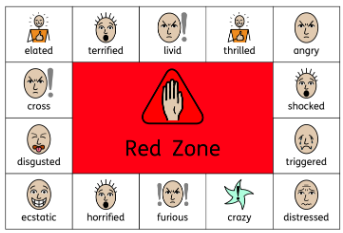
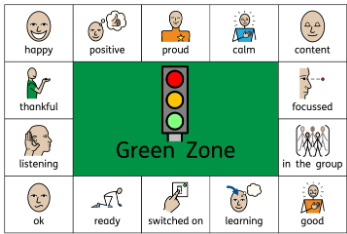
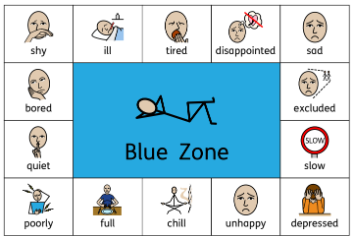
The Red Zone is used to describe extremely heightened states of alertness and intense emotions. A person may be elated or experiencing anger, rage, devastation, or terror when in the Red Zone.
The Yellow Zone is also used to describe a heightened state of alertness and elevated emotions, however one has more control when they are in the Yellow Zone. A person may be experiencing stress, frustration, anxiety, or excitement when in the Yellow Zone.
The Blue Zone is used to describe low states of alertness and ‘down’ feelings such as when one feels sad, tired, sick, or bored.
The Green Zone is used to describe a calm state of alertness. A person may be described as happy, focused, content, or ready to learn when in the Green Zone. This is the zone where optimal learning occurs.
All children are taught about the different zones through PSHE lessons, oracy sessions and in assemblies. Visuals to support children to identify their emotional state are displayed in each classroom, where they can move their names independently to show what emotion they are feeling at different times. The zones are revisited every September and adults regularly model to children how to use the zones to describe and regulate their behaviour and emotions.
What happens when behaviour does not reflect the school rules?
We aim to be positive in our behaviour management, praising good behaviour and encouraging children to behave sensibly. At times, a pupil’s behaviour may fall short of the school’s expectations, and it needs to be corrected swiftly. A simple reminder and expression of disapproval is often adequate in correcting a child’s behaviour. At other times, a consequence may be necessary to encourage pupils to recognise that their behaviour has consequences.
The use of consequences should be characterised by certain features:
● A consequence involves the adult and pupil involved; staff should avoid bringing public attention to a reprimand or sanction.
● It should be the behaviour rather than the person that is sanctioned.
● It must be clear why the consequence is being applied.
● It must be made clear what changes in behaviour are required to avoid future consequences.
● There should be a clear distinction between minor and serious breaches of discipline.
● Children are given the opportunity to reflect on their behaviour through reflection/restorative conversation.


